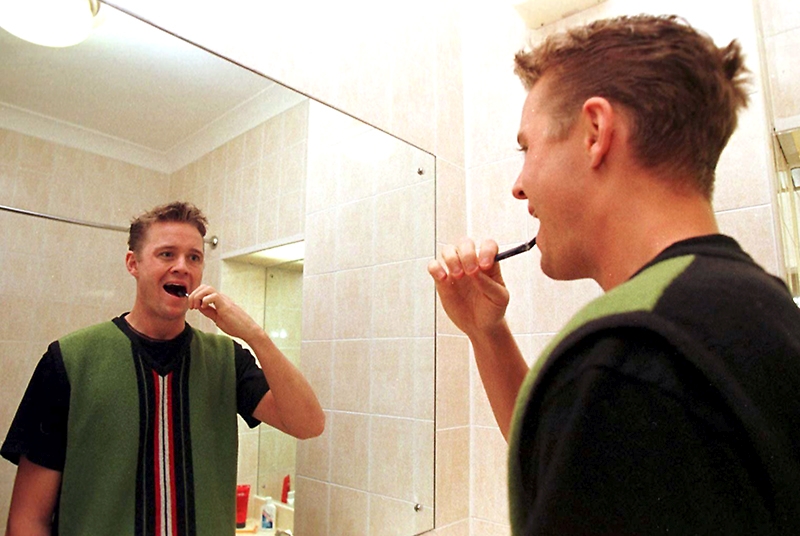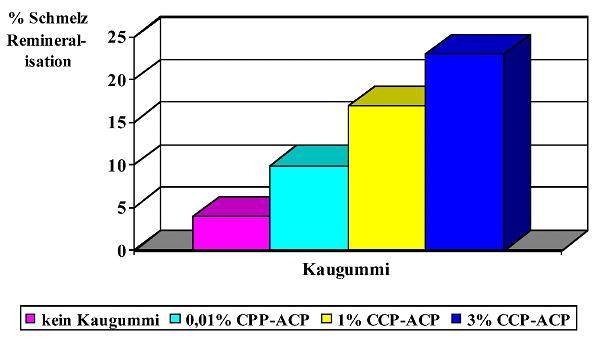Sports drinks: uncomfortable truths about tooth health

Many athletes routinely use sports drinks during training and competition. But did you know that these drinks can also pose a risk to long-term dental health? SPB explains and offers some tooth-friendly advice
As an athlete, coach or trainer, you’ll almost certainly be aware of the significant advances in sport nutrition that have been made over the past two decades. Probably the most ubiquitous sports nutrition product for enhancing sports performance is the carbohydrate drink. Although there are a number of different carbohydrate drink formulations out there (eg small amounts of added whey protein, different carbohydrate blends etc), the rationale for their use remains unchanged; by providing exercising muscles with a supply of carbohydrate during exercise, it’s possible to slow down the rate at which the muscles’ own store of carbohydrate (glycogen) is exhausted, delaying the onset of fatigue and enhancing performance.Benefits and drawbacks
Given these performance benefits, it’s hardly surprising that sports drink use is considered as the norm among most sportsmen and women. However, when it comes to dental health, the use of carbohydrate drinks is not advantageous. Indeed, there are two main reasons why regular sports drink use can be detrimental:- Increased risk of tooth decay (dental caries) - Nearly all sports drinks contain sugars, such as glucose, fructose and dextrose. These sugars provide a fermentable medium for bacteria in the mouth to get to work on. When the bacteria ferment these sugars, acids such as lactic acid are produced. These acids attack the mineral structure on the enamel surface of the tooth (see panel 1), and if the capacity of the tooth to repair itself (by re-mineralisation), is exceeded consistently over a period of time, the result is dental cavities (holes) in the tooth;
- Increased environmental acidity – Fermentation of sugars is not the only way that teeth can be exposed to acid. Simply consuming drinks that are acidic such as fruit juices, lemonade, cordials etc can result in an acidic environment around the teeth, which can lead to demineralization and damage to the protective layer of enamel. Although this effect is not site specific (as is the case with caries), the frequent and repeated consumption of acidic drinks can, over time, erode and damage the enamel surface of the all the teeth in the mouth, greatly increasing the risk to dental health in future years (see panel 2).
Panel 1: Understanding dental enamel
Dental enamel is the hardest and most highly mineralized substance in the human body. The primary mineral in enamel is a crystalline substance consisting of calcium phosphate (in the form of hydroxylapatite), which comprises 95% of the total enamel structure. The job of enamel is to protect the underlying dental tissue (dentine) during daily use – ie when chewing, biting, crunching, and grinding. Enamel also insulates the teeth from potentially painful temperatures and chemicals.Although tooth enamel is a completely biologically inert substance (ie having no blood supply), it is not a static tissue because it can undergo chemical changes that can cause demineralization and re-mineralization. This can be summed up by the following equation:
Calcium phosphate (hydroxylapatite) + acid ↔ Calcium ions + phosphate + water
In simple terms, exposing tooth enamel to acid (eg from acidic drinks) causes the breakdown of the uppermost layer of enamel into soluble calcium, phosphate and water (demineralization). Importantly though, this reaction is to some extent reversible; so although a small amount of exposure to acid causes some breakdown of tooth enamel, if the tooth surface is then exposed to a calcium-rich solution in the presence of phosphate, some enamel can be reformed (re-mineralization). This is why manufacturers add fluoride to toothpaste; fluoride helps calcium and phosphate to diffuse onto the surface of the tooth, where re-mineralization can take place. In reality, tooth enamel is in a constant state of flux, being eroded and reformed. The regular consumption of acidic drinks however can easily upset this delicate balance pushing the equation above from one that is in approximate balance to one that moves steadily from left to right (demineralization).Panel 2: The consequences of enamel erosion
Enamel erosion is insidious in that the early signs and symptoms may not set alarm bells ringing. These signs and symptoms include:- Tooth sensitivity – either to hot or cold temperatures, or to certain foods such as sweet foods.
- Tooth rounding – the teeth can begin to take on a rounded and smooth appearance.
- Tooth discoloration – as the layer of protective enamel become progressive thinner, the teeth may appear yellow because more dentin is exposed.
Extent of the problem
Most experts believe that during the last 15 years or so, there has been a significant increase in the prevalence and severity of erosive tooth wear, particularly in adolescents, which is worrying(1). This is because enamel erosion is believed to compromise the health of teeth in later life even when dental practices are otherwise good. One reason for this seems to be the growing consumption of products such as carbonated drinks, fruit juice and fruit flavored drinks(2). There’s also concern amongst dental professionals that increasing sports drink use (among both elite and recreational athletes) is partly responsible for this increased incidence of enamel erosion – concerns that are supported by scientific studies.In one study, British scientists investigated the enamel eroding potential of five different sports drinks by measuring their acidity and ability to actually erode enamel(3). These drinks were also compared to orange juice (a known and potent enamel eroder) and water, which has a neutral effect (neither erodes nor builds enamel). The researchers found that the acidity (see box 3) varied from a pH of 3.70 for the least acidic sports drink (about the same as orange juice) to a pH of 3.16 for the most acidic (over three times more acidic than orange juice). Moreover, when the researchers immersed enamel samples in these drinks for a period of 60 minutes, they found that the most acidic drink removed 5.36 microns of enamel from the surface – nearly twice as much as an hour’s immersion in orange juice!
Panel 3: Acidity
This pH scale of acidity/alkalinity ranges from zero to 14. Water, which is considered neutral – ie neither acidic nor alkaline – has a pH of 7. Anything below 7 is considered to be acidic, and anything above 7 is considered to be alkaline. Researchers have found that when it comes to dental enamel, drinks with pH of 5.5 or lower are acidic enough to cause erosion. Indeed, some sports drinks have been measured with a pH of 3.16 – about 10,000 times more acidic than water(3)!Another study assessed the erosive potential of different sixty different dietary agents including soft drinks, energy drinks, sports drinks, alcoholic drinks, fruit juice, fruit, mineral water, yogurt, tea, coffee, salad dressing and various medications(4). In particular, the researchers looked at the changes in enamel surface hardness after 2 and 4 minutes exposure. The results showed that all the agents produced some erosion except for coffee, tea, some medications and alcoholic drinks, yoghurts and the non-flavored mineral waters. Further analysis showed that the acidity of the food/drink etc was the most important factor in determining its erosive potential.
In a further study, US researchers compared the enamel erosion effects of carbonated drinks with those of a sports drink(5). Carbonated drinks contain a large amount of carbon dioxide, which when dissolved in water, forms a weak solution of carbonic acid. Therefore, you might expect a carbonated drink to be more acidic and thus more damaging to enamel than a non-fizzy sports drink. The drinks tested were as follows:
- Coca Cola Classic
- Diet Coke
- Gatorade sports drink
- Red Bull high-energy drink
- Tap water (control).
Milky connection
A US study also found similar results on enamel erosion potential, ranking the following drinks (most errosive first) in the following order: Red Bull > Gatorade > Coca-Cola Classic > Diet Coke > Starbucks Frappucino(6). What’s interesting in this study is that the (milky) Starbucks Frappucino was very close to water in terms of its potential action on tooth enamel (ie almost no errosive effects).Other studies have also found that drinks containing milk are much kinder, even if they are acidic in nature. For example a study in Thailand looked at the effects of acidic drinks on surface hardness of enamel and dentine including a cola soft drink, drinking yogurt, orange juice and a sports drink(7). The enamel and dentine samples were alternately immersed for five seconds each in the drinks and then in an artificial saliva (which has a neutralizing effect on acid). This process was repeated for 10 cycles. As might be expected, the cola drink, orange juice and sports drink all significantly reduced surface hardness of the enamel samples. However, the drinking yoghurt, despite being acidic, did not reduce enamel hardness.
Meanwhile, a study by scientists in Pakistan showed that milk really does give a protective effect(8). In the study, 6.5mls of UHT milk was added to 25mls of six different carbonated drinks and the effects of each mixture on enamel hardness after 60 minutes exposure was assessed and compared with the carbonated drinks without added milk. The researchers found that the addition of milk to the carbonated beverages reduced their overall capacity to bring about dental erosion and that this protective effect was much larger than when just water was added (ie it didn’t come about just because the carbonated drink had been diluted).
Calcium and protein
What is it in milk that helps protect tooth enamel from acid erosion and can we take advantage of this fact? One British study indicated that one of the proteins in milk (casein) seems to have a protective effect; 0.2% by weight of casein added to a variety of acidic beverages significantly reduced enamel erosion, and was more effective compared to the same amount of egg protein in the form of ovalbumin(9). One possible reason for the special protective properties of milk protein is that casein can be absorbed onto the enamel surface, forming a protein film with enhanced erosion-inhibiting properties.This is all very well – however, the addition of milk or milk protein to a typical sports drink might make for rather unpalatable results in terms of taste and appearance. Fortunately, it seems that the erosive effects of sports drinks can also be significantly reduced by adding calcium. Milk is an excellent source of calcium and recent studies have shown that exposing tooth enamel to high-calcium milk for extended periods, can not only protect against erosion but can also help re-mineralize enamel as effectively as the modern toothpaste additive known as CCP-ACP (a compound often added to toothpastes specifically designed for sensitive teeth – see figure 1)(10).
Figure 1: Remineralization of enamel lesions by sugar-free chewing gum containing CCP-ACP*

Increasing concentrations of CCP-ACP (in chewing gum in this study) helps to remineralize dental enamel lesions. *Reproduced from Reynolds et al, J Clin Dent Res 1999; X (2), 86-88)
However, the addition of calcium to sports drinks for enamel protection doesn’t have to involve milk. A British study used real subjects who drank 250ml volumes of sports drinks with and without added calcium over a 10-minute period, four times per day. The loss of enamel was measured on days 5, 10 and 15 using a device known as a ‘contacting profilometer’. The results showed that adding calcium to a sports drink (a modification that has previously been applied to some soft and carbonated drinks) significantly reduces the erosive potential of that drink. Better still, the protective effect remains regardless of the concentration of carbohydrate in the drink.
The results above are supported by those from a Korean study into the effects of adding nano-sized particles of hydroxylapatite (nano-HA) to a sports drink (Powerade)(11). Nano-HA consists of extremely tiny particles of the main mineral in enamel – hydroxylapatite. In the study, the researchers compared the effects on dental enamel of neat Powerade and Powerade with 0.05%, 0.10%, and 0.25% of added nano-HA. What they found was that dental erosion was effectively prevented with increasing amounts of added nano-HA, and they concluded that a sports drink containing 0.25% nano-HA might prevent dental erosion.
Summary
Sports drinks such as carbohydrate drinks can be more detrimental to tooth enamel health than even acidic drinks such as orange juice and carbonated beverages. What can make things even worse is that these drinks are generally not consumed in one big gulp, but instead sipped over a prolonged period, increasing the number of exposures and total contact time with the user’s tooth enamel.The good news is that sports drinks made with milk (eg recovery drinks) don’t seem to have this effect because the milk proteins and calcium they contain help to counteract the effects of any acidity. Those with particularly sensitive teeth can take advantage of this fact by adding a small amount of skimmed milk to their favorite carbohydrate drink. The downside to this is that the palatability and ease of absorption may be adversely affected. An obvious question that follows is just why are most sport drinks so acidic? One reason is that increased acidity tends to improve the taste of a drink; another is that it increases the shelf life of the powdered product. To date, manufacturers have been reluctant to add calcium formulations to their drinks – largely because it reduces the ‘tanginess’ of the taste.
For now, one thing is for sure - sports drinks users are at an increased risk of enamel erosion. A New Zealand study on ten elite triathletes showed that(13):
- Sports drinks were consumed by 83.9% of the triathletes while training;
- In 48.4% of the triathletes, the consumption of sports drinks was described as 'little sips often, from a bottle' (a practice that maximizes exposure to the teeth to sugar and fruit acids).
- Choose sport drinks with the lowest acidity possible (highest pH - preferably higher than 5.5). This is not easy however because the information on product labels rarely includes any reference to the drink’s pH value.
- Try and drink larger volumes of sports drink less often rather than constant sipping (thereby reducing tooth exposure time to sugar and acids).
- Don’t use sports drinks as a mouthwash – it’s far better to swallow the drink immediately, reducing tooth contact time.
- Try mixing a bit of skimmed milk into a carbohydrate drink; if you find the taste acceptable and it doesn’t cause you gastric distress, this is a good option.
- Get in the habit of drinking some skimmed milk after consuming any acidic drinks.
- If you consume sports drinks, use enamel protecting/strengthening toothpaste – both morning and night time plus after training.
- Even though it is more difficult given the coronavirus restrictions, athletes should make sure they continue to have regular dental check-ups; a dentist will be able to detect early signs of erosion and advise accordingly.
- Caries Res. 2011;45 Suppl 1:60-8
- Zhonghua Kou Qiang Yi Xue Za Zhi. 2005 Nov;40(6):478-80
- Eur J Prosthodont Restor Dent. 2005 Dec;13(4):186-90
- Br J Nutr. 2012 Jan;107(2):252-62
- J Contemp Dent Pract. 2007 Nov 1;8(7):11-20
- Gen Dent. 2007 Nov-Dec;55(6):527-31
- J Dent. 2006 Mar;34(3):214-20
- Br Dent J. 2009 Feb 14;206(3):E6; discussion 154-5
- Caries Res. 2010;44(6):525-30
- Southeast Asian J Trop Med Public Health. 2010 Nov;41(6):1494-9
- J Dent. 2011 Sep;39(9):629-35
- Canadian J of Applied Physiology. 1999; 24;173-187
- Int J Sports Med. 2011 Sep;32(9):720-4
You need to be logged in to continue reading.
Please register for limited access or take a 30-day risk-free trial of Sports Performance Bulletin to experience the full benefits of a subscription. TAKE A RISK-FREE TRIAL
TAKE A RISK-FREE TRIAL
Newsletter Sign Up
Testimonials
Dr. Alexandra Fandetti-Robin, Back & Body Chiropractic
Elspeth Cowell MSCh DpodM SRCh HCPC reg
William Hunter, Nuffield Health
Newsletter Sign Up
Coaches Testimonials
Dr. Alexandra Fandetti-Robin, Back & Body Chiropractic
Elspeth Cowell MSCh DpodM SRCh HCPC reg
William Hunter, Nuffield Health
Keep up with latest sports science research and apply it to maximize performance
Today you have the chance to join a group of athletes, and sports coaches/trainers who all have something special in common...
They use the latest research to improve performance for themselves and their clients - both athletes and sports teams - with help from global specialists in the fields of sports science, sports medicine and sports psychology.
They do this by reading Sports Performance Bulletin, an easy-to-digest but serious-minded journal dedicated to high performance sports. SPB offers a wealth of information and insight into the latest research, in an easily-accessible and understood format, along with a wealth of practical recommendations.
*includes 3 coaching manuals
Get Inspired
All the latest techniques and approaches
Sports Performance Bulletin helps dedicated endurance athletes improve their performance. Sense-checking the latest sports science research, and sourcing evidence and case studies to support findings, Sports Performance Bulletin turns proven insights into easily digestible practical advice. Supporting athletes, coaches and professionals who wish to ensure their guidance and programmes are kept right up to date and based on credible science.









